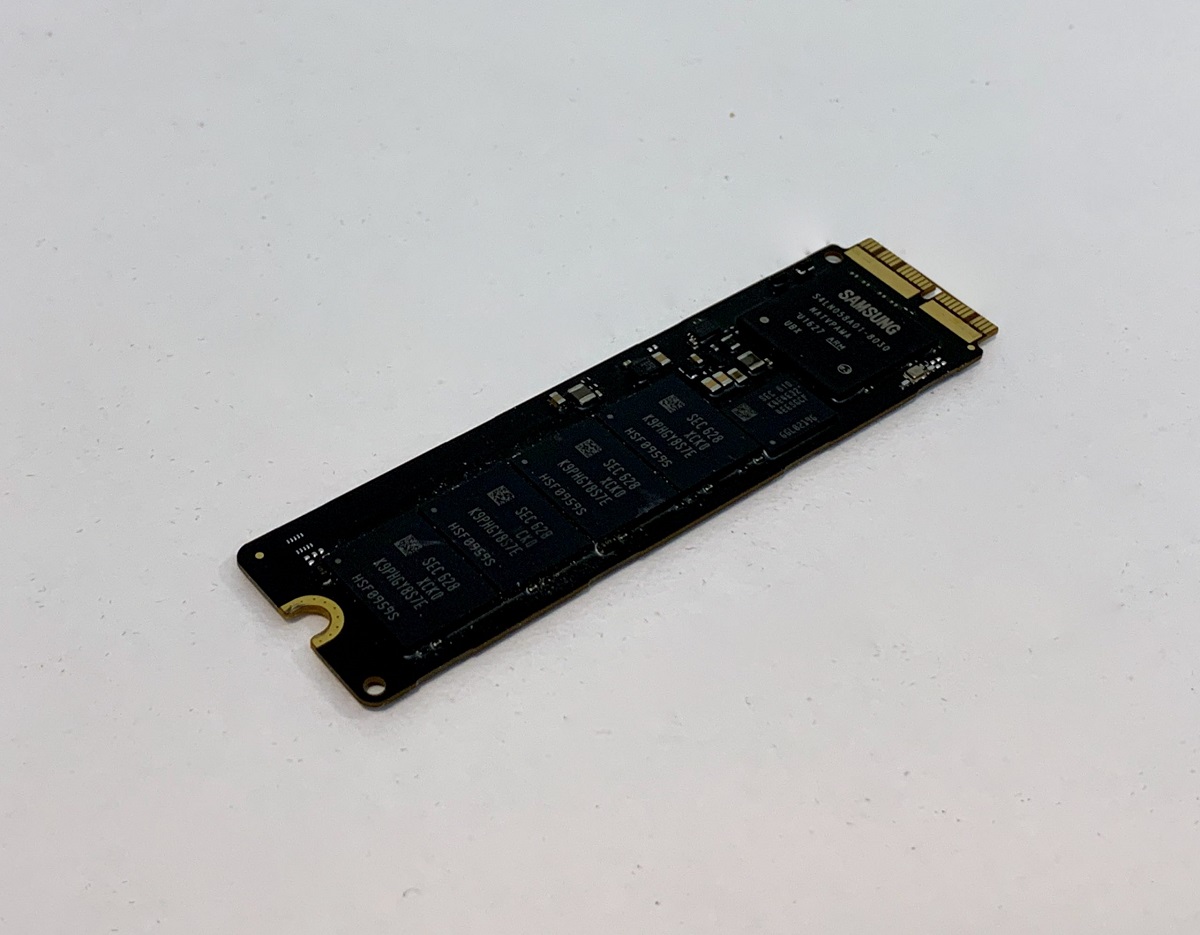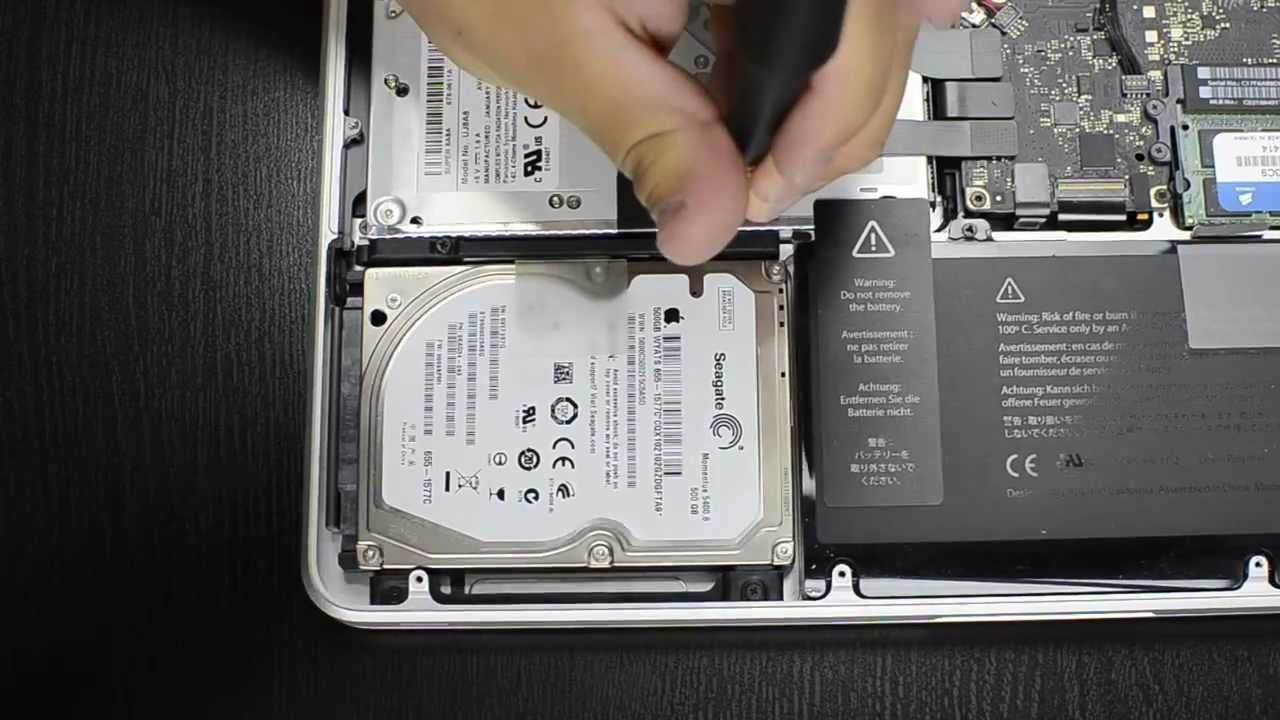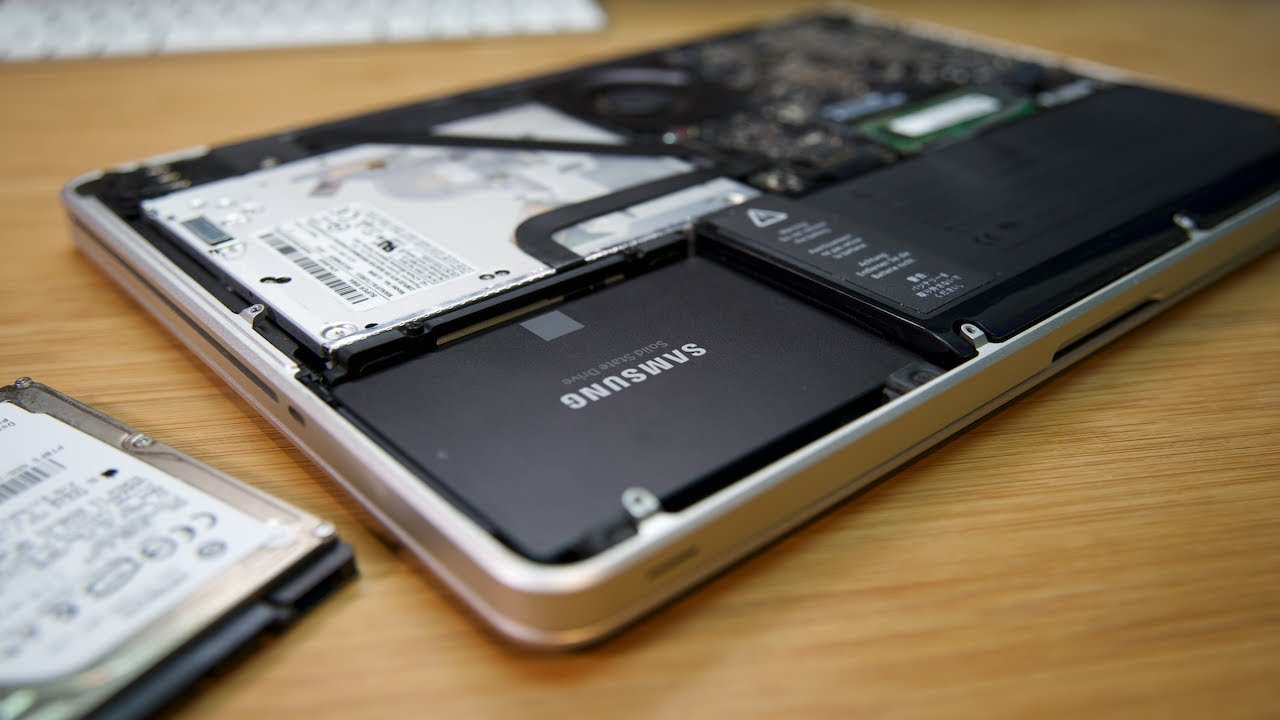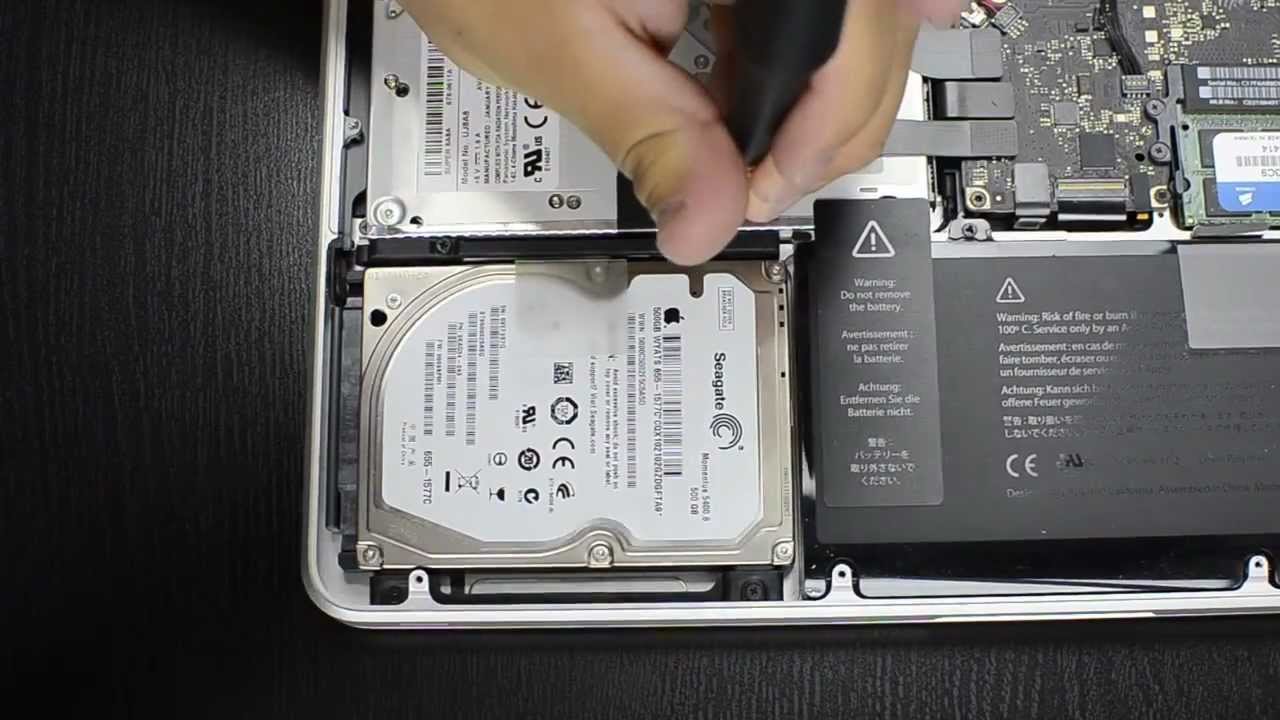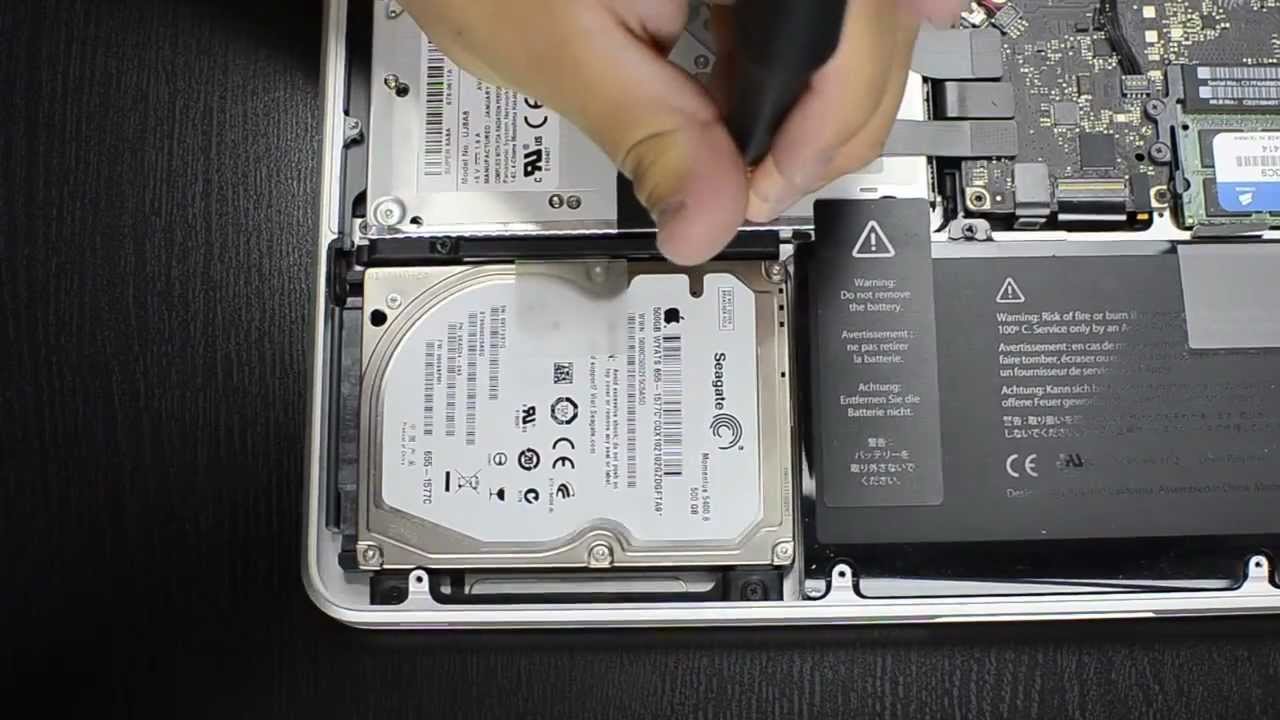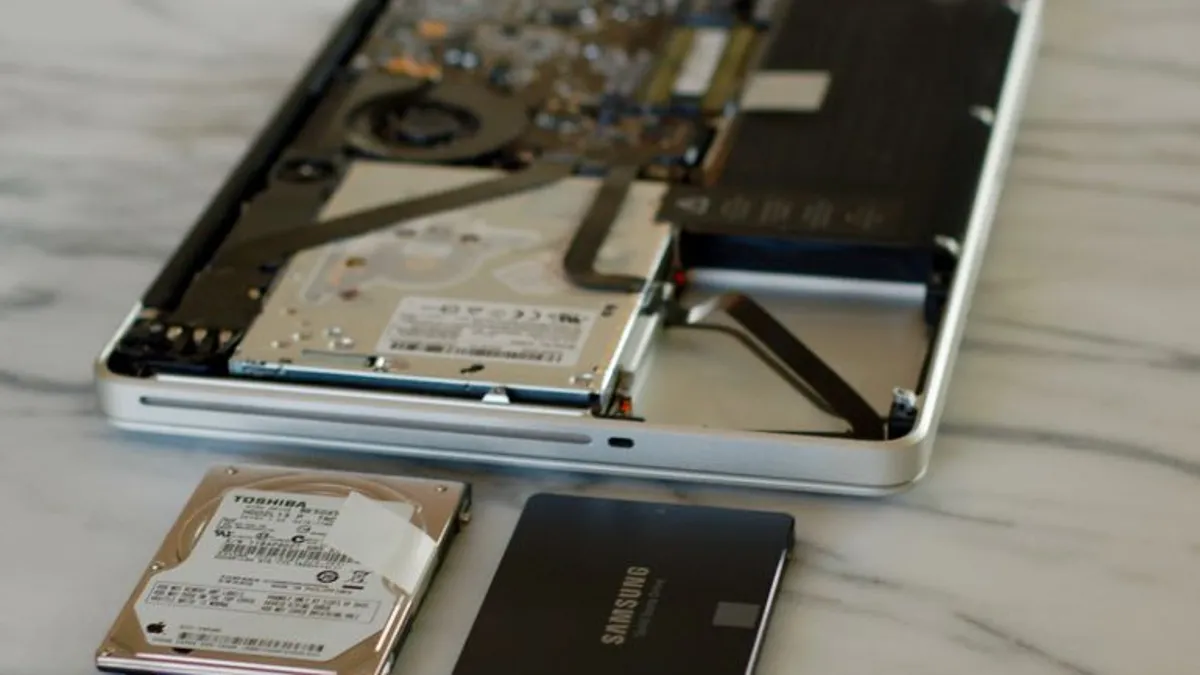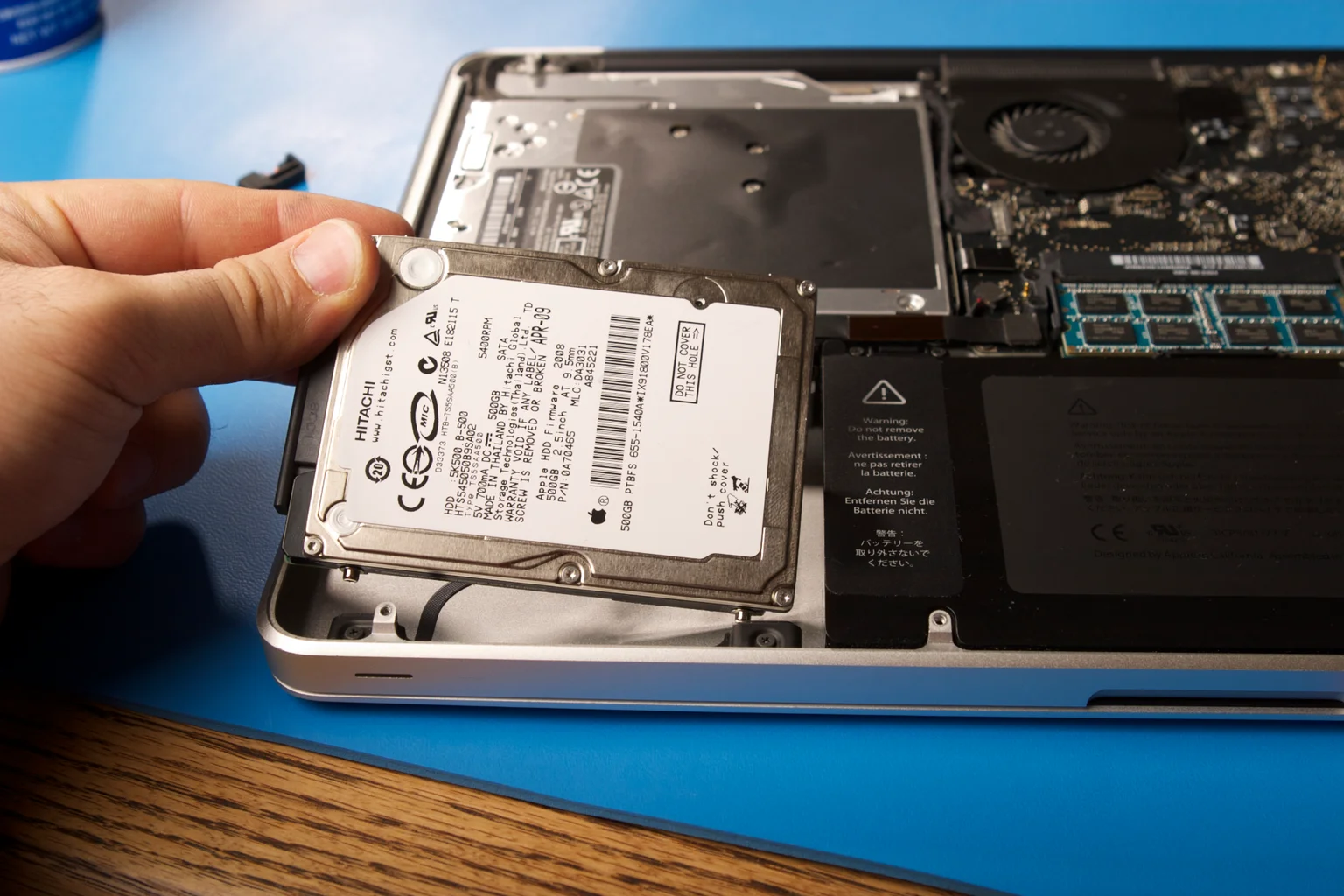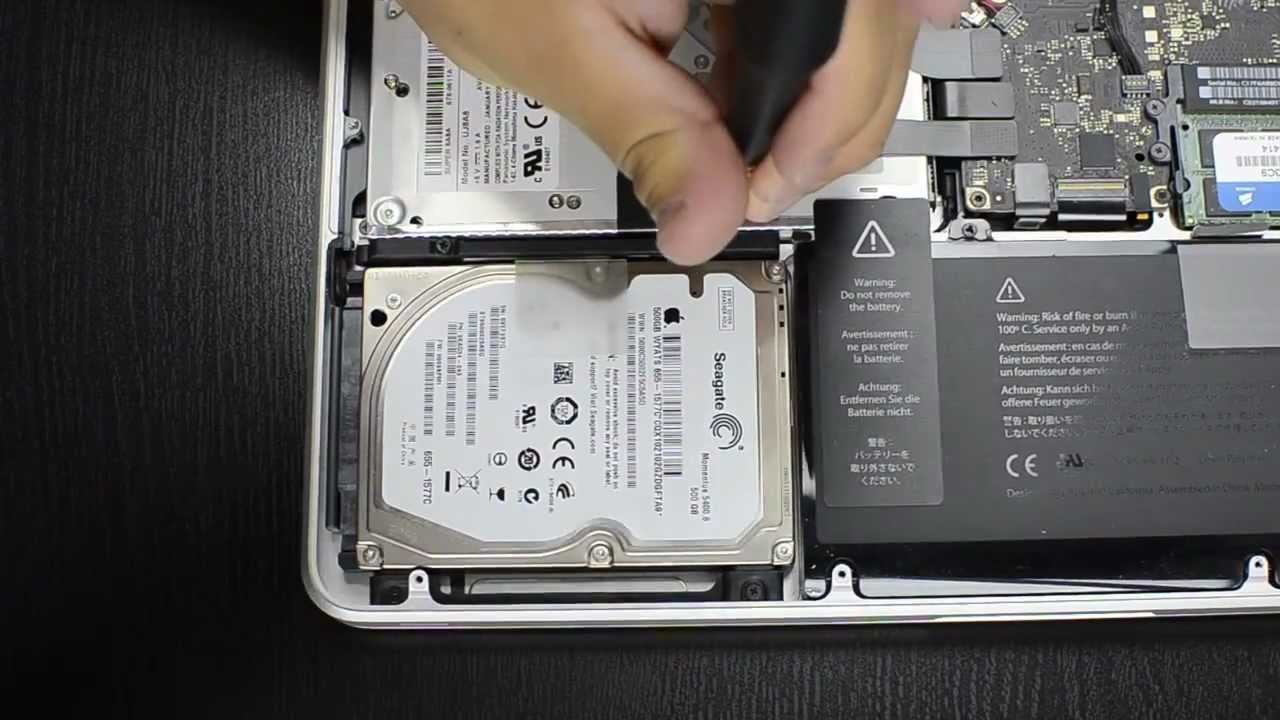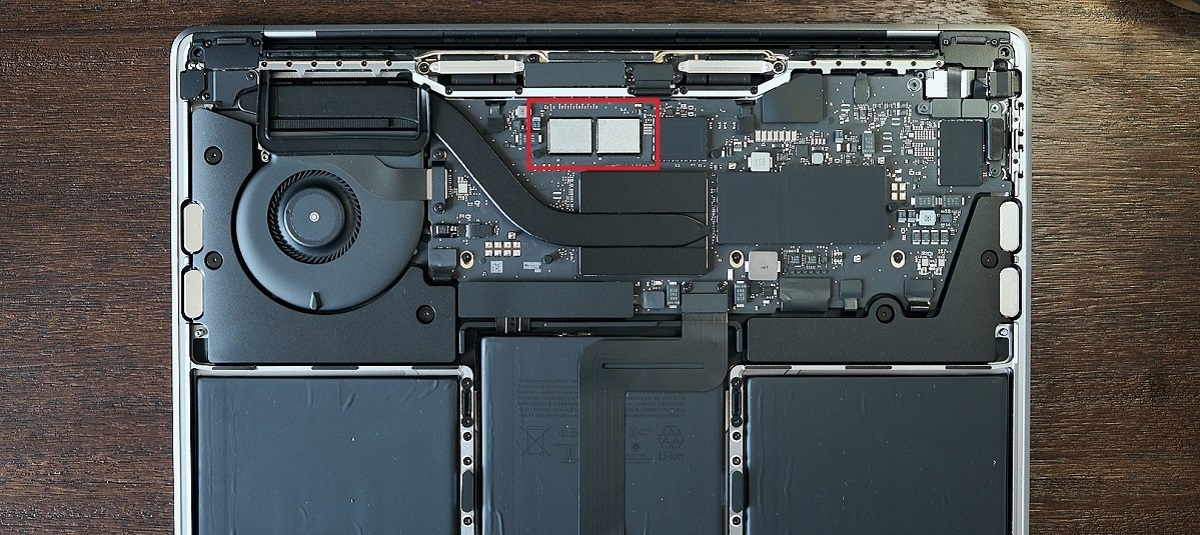Introduction
Welcome to our guide on choosing the right SSD for your Macbook Pro! If you’re looking to upgrade your laptop’s storage for a faster and more efficient performance, you’ve come to the right place.
Solid State Drives (SSDs) have become the go-to storage solution for many Macbook Pro users due to their remarkable speed, reliability, and durability. With an SSD, you can experience faster boot times, quicker application launches, and seamless multitasking.
However, with a wide range of SSD options available on the market, choosing the right one can be a daunting task. That’s why we’ve created this comprehensive guide to help you make an informed decision.
In the following sections, we will discuss various factors to consider when selecting an SSD for your Macbook Pro, including compatibility, performance, storage capacity, reliability, and cost. By the end of this guide, you’ll have a clear understanding of what to look for in an SSD that meets your specific needs and budget.
Before we dive into the details, it’s important to note that upgrading your Macbook Pro’s storage with an SSD requires some technical knowledge. If you’re not comfortable performing the installation yourself, we recommend seeking the assistance of a professional to ensure a smooth and successful upgrade.
Now, let’s explore the world of SSDs and find the perfect one for your Macbook Pro!
How to Choose the Right SSD for your Macbook Pro
When it comes to selecting an SSD for your Macbook Pro, there are several factors to consider. Let’s take a closer look at each of these factors to help you make an informed decision:
- Compatibility: First and foremost, you need to ensure that the SSD you choose is compatible with your Macbook Pro. Macs typically use PCIe-based SSDs, so make sure the SSD you select matches the interface and form factor of your laptop.
- Performance: The performance of an SSD is crucial, as it determines how quickly your Macbook Pro can read and write data. Look for SSDs with high sequential read and write speeds to ensure snappy performance. Additionally, consider SSDs with a high Input/Output Operations Per Second (IOPS) rating, as it affects the responsiveness of your laptop during multitasking and heavy workloads.
- Storage Capacity: Determine how much storage space you need for your Macbook Pro. SSDs are available in various capacities, ranging from 128GB to 4TB or more. Assess your storage requirements based on the size of your files, applications, and media libraries.
- Reliability: Opt for an SSD that offers high reliability and endurance. Look for features like error-correcting code (ECC) and power loss protection (PLP) that help prevent data corruption and ensure the integrity of your files. Additionally, check the warranty and lifespan ratings provided by the manufacturer.
- Cost: SSDs come in a range of prices, so it’s important to consider your budget. While higher-end SSDs may offer superior performance and durability, they can also be more expensive. Determine the balance between cost and performance that best suits your needs.
By considering these factors, you can narrow down your options and find the right SSD for your Macbook Pro. It’s crucial to do thorough research and read reviews from trusted sources to ensure the reliability and performance of the SSD you choose.
Upgrading your Macbook Pro with a high-quality SSD can breathe new life into your laptop, improving its overall performance and storage capabilities. So, take your time, evaluate your needs, and find the perfect SSD that will enhance your Macbook Pro experience for years to come.
Compatibility: Understanding the Different Types of SSDs for Macbook Pro
When it comes to upgrading the storage of your Macbook Pro with an SSD, it’s important to understand the different types of SSDs available and their compatibility with your laptop. Let’s delve into the compatibility considerations:
1. Form Factor: The form factor of an SSD refers to its physical size and shape. Macbook Pros typically use 2.5-inch SATA or M.2 SSDs. If you’re upgrading an older model, chances are it uses a 2.5-inch SATA interface. However, newer models might have M.2 slots for PCIe-based NVMe SSDs. Ensure that the SSD you choose matches the form factor supported by your Macbook Pro.
2. Interface: The interface of an SSD determines how it connects to your Macbook Pro’s motherboard. Most recent Macbook Pro models use the PCIe (Peripheral Component Interconnect Express) interface, which offers faster data transfer rates compared to the older SATA (Serial Advanced Technology Attachment) interface. Make sure to choose an SSD that matches your Macbook Pro’s interface to ensure proper compatibility.
3. Operating System Support: Before purchasing an SSD, ensure that it is compatible with the version of macOS you are using on your Macbook Pro. In most cases, newer SSDs are designed to work seamlessly with macOS, but it’s always good to double-check the manufacturer’s specifications.
4. Capacity Limitations: Some older Macbook Pro models have limitations on the maximum storage capacity they can support. Check your Macbook Pro’s specifications or consult with the manufacturer to determine the maximum capacity your model can accommodate. This will help you choose an SSD within the supported storage range.
5. Firmware and Driver Updates: Keep in mind that firmware and driver updates may be required for certain SSDs to work optimally with your Macbook Pro. Check the manufacturer’s website for any available updates and ensure compatibility with your specific model.
By understanding these compatibility considerations, you can ensure that the SSD you choose is a perfect fit for your Macbook Pro. Always consult the manufacturer’s specifications and guidelines to make an informed decision.
Now that you have a deeper understanding of SSD compatibility, let’s move on to the next section to explore the performance aspect of choosing an SSD for your Macbook Pro.
Performance: Which SSD Offers the Best Speed for Macbook Pro
The performance of an SSD is a critical factor to consider when choosing one for your Macbook Pro. A high-speed SSD can significantly enhance the overall responsiveness and efficiency of your laptop. Here are some key factors to consider regarding SSD performance:
1. Sequential Read and Write Speeds: The sequential read and write speeds of an SSD determine how quickly data can be read from or written to the drive. Higher speeds result in faster file transfers, quicker boot times, and snappier application launches. Look for SSDs with faster sequential read and write speeds, typically measured in megabytes per second (MB/s) or gigabytes per second (GB/s).
2. Random Read and Write Speeds (IOPS): While sequential speeds are important, random read and write speeds, measured in Input/Output Operations Per Second (IOPS), play a crucial role in day-to-day tasks and multitasking. Higher IOPS ratings indicate better performance during activities such as opening multiple applications or working with large files simultaneously.
3. Controller and NAND Technology: The controller and NAND technology used in an SSD greatly impact its performance. Advanced controllers and newer generations of NAND, such as TLC (Triple-Level Cell) or MLC (Multi-Level Cell), can offer better performance and endurance. Look for SSDs that utilize the latest technologies to ensure optimal performance.
4. Cache Size: SSDs often come with a built-in cache, which helps improve performance by temporarily storing frequently accessed data. SSDs with larger cache sizes tend to offer better performance, as they can hold more data for quick access.
5. Overprovisioning: Overprovisioning is the practice of allocating a portion of SSD capacity for background tasks and maintaining performance consistency. SSDs with overprovisioning are generally more stable and can offer better sustained performance over time.
It’s important to note that while SSDs offer significant performance improvements compared to traditional hard drives, the actual speed you’ll experience will also depend on other factors, such as your Macbook Pro’s hardware and the tasks you perform. Nevertheless, choosing an SSD with higher performance specifications can provide a noticeable difference in everyday usage.
When comparing SSDs, look for in-depth reviews, benchmarks, and real-world performance tests to gain a better understanding of their speed capabilities. Consider your specific needs such as gaming, multimedia editing, or professional applications, and choose an SSD that aligns with your requirements.
With the right SSD, you can enjoy lightning-fast file transfers, reduced application loading times, and improved overall system responsiveness on your Macbook Pro.
Now that we’ve explored SSD performance, let’s move on to the next section, which focuses on determining the right storage capacity for your Macbook Pro.
Storage Capacity: Determining the Right SSD Size for your Macbook Pro
Choosing the right storage capacity for your Macbook Pro’s SSD is essential to ensure you have enough space to store all your files, applications, and media. Here’s what you need to consider when determining the appropriate SSD size:
1. Current and Future Needs: Evaluate your current storage requirements and consider your future needs. Take into account the types of files you frequently work with, such as documents, photos, videos, and music. If you engage in activities that require large file sizes, such as video editing or gaming, you’ll need a higher storage capacity.
2. Operating System and Applications: Consider the space required by your operating system and the applications you regularly use. macOS and various software applications can consume a significant portion of your SSD’s capacity. Make sure to allocate enough space for them without compromising on storage for your files.
3. Media Libraries: If you have a large collection of photos, videos, or music, factor in the space needed to store them. Multimedia files can quickly consume a significant portion of your SSD’s capacity, so make sure to allocate sufficient storage for your media libraries.
4. Cloud Storage and External Drives: If you rely on cloud storage services or external drives, you may be able to offload some files to free up space on your Macbook Pro’s SSD. Consider utilizing these options to optimize your storage capacity.
5. Cost Per Gigabyte: SSDs with larger storage capacities tend to be more expensive. It’s important to strike a balance between the capacity you need and your budget. Consider your storage needs carefully to avoid spending money on excess capacity that you won’t utilize fully.
When it comes to choosing an SSD size, it’s generally recommended to opt for a capacity that allows for future growth. A 500GB or 1TB SSD would be a good starting point for most users, offering ample space for the operating system, applications, and files. However, if you require more storage, options with higher capacities, such as 2TB or 4TB, are available.
Remember that you can also extend your storage capacity externally using options like external hard drives, network-attached storage (NAS), or cloud storage services if required. These solutions can supplement your SSD storage and provide additional space for your files.
Overall, carefully assess your storage needs, considering your current usage, future requirements, and budget to determine the right SSD size for your Macbook Pro. Choosing the appropriate capacity will ensure you have enough storage space for all your files and applications, allowing you to work seamlessly and efficiently.
Now that we’ve discussed storage capacity, let’s move on to the next section, where we’ll explore the importance of reliability when choosing an SSD for your Macbook Pro.
Reliability: Choosing an SSD with Longevity and Durability for Macbook Pro
When selecting an SSD for your Macbook Pro, it’s important to prioritize reliability to ensure your data remains safe and your investment lasts. Here are some factors to consider when evaluating the reliability of an SSD:
1. Brand Reputation: Opt for SSDs from reputable brands known for their quality and reliability. Established brands often have a proven track record and prioritize the durability of their products.
2. Endurance Rating: The endurance rating of an SSD refers to its ability to handle a certain amount of data write operations over its lifetime. Higher-endurance SSDs are designed to withstand continuous usage and can be more reliable in the long run. Check the endurance rating, typically measured in Total Bytes Written (TBW), provided by the manufacturer.
3. Error-Correcting Code (ECC): Look for SSDs equipped with error-correcting code (ECC) technology. ECC helps detect and correct data errors that may occur during read and write operations, ensuring data integrity and reducing the risk of data loss or corruption.
4. Power Loss Protection (PLP): SSDs with power loss protection (PLP) are designed to safeguard your data in the event of a sudden power loss. PLP ensures that any data in the process of being written is securely stored in non-volatile memory, preventing data loss or corruption.
5. Warranty: Check the warranty provided by the manufacturer. A longer warranty period usually indicates the manufacturer’s confidence in their product’s reliability and durability.
6. User Reviews and Ratings: Read user reviews and ratings to gain insights into the real-world experiences of other users. Look for feedback regarding durability, reliability, and any potential issues that may arise with the SSD you’re considering.
By considering these factors, you can choose an SSD that offers both longevity and durability for your Macbook Pro. A reliable SSD not only ensures the safety of your data but also provides peace of mind knowing that your investment is protected.
Remember to follow good SSD maintenance practices, such as keeping your firmware up to date and regularly performing backups of your critical data. These practices can enhance the reliability and longevity of your SSD, ensuring a smooth and secure computing experience.
Now that we’ve discussed the importance of reliability, let’s move on to the next section where we’ll explore the cost aspect of choosing an SSD for your Macbook Pro.
Cost: Finding the Best SSD for Macbook Pro that Fits Your Budget
When considering an SSD upgrade for your Macbook Pro, cost is an important factor to take into account. Finding the best SSD that fits your budget requires balancing performance, capacity, and reliability with your financial constraints. Here are some factors to consider:
1. Performance vs. Price: Higher-performing SSDs often come with a higher price tag. Determine the level of performance you need based on your specific usage requirements. If you’re a casual user, a mid-range SSD may offer more than enough performance at a lower cost. However, if you require faster data transfer speeds for demanding tasks, investing in a higher-end SSD may be worth considering.
2. Capacity vs. Price: SSDs with larger capacities tend to be more expensive. Assess your storage needs carefully and choose a capacity that accommodates your files and applications without going overboard. Consider offloading less frequently accessed data to external storage options to save on cost if necessary.
3. Brand and Warranty: SSDs from reputable brands often have higher price points but come with better warranties and customer support. Consider the reliability and customer satisfaction associated with the brand when making your decision. Investing in a reliable SSD with a solid warranty can provide peace of mind and potential cost savings in the long run.
4. Sales and Promotions: Keep an eye out for sales, discounts, and promotions offered by retailers or SSD manufacturers. Prices can fluctuate, and you may find a great deal within your budget if you’re patient and actively search for discounts.
5. Consider Future Proofing: While it’s important to stay within your budget, also consider future requirements. Opting for an SSD with slightly higher capacity or better performance might offer better value in the long run, as it can accommodate future needs without the necessity of frequent upgrades.
Ultimately, the best SSD for your Macbook Pro is one that offers a balance between performance, capacity, reliability, and cost. Take the time to research and read reviews from reputable sources to ensure you’re making an informed decision.
It’s worth noting that SSD prices have been steadily decreasing over the years, providing more affordable options for consumers. As technology advances, SSDs with better performance and capacities become more accessible to a wider range of budgets.
By considering your specific requirements, researching deals, and analyzing the trade-offs between performance and price, you can find the best SSD for your Macbook Pro that aligns with your budget.
Now that we’ve explored the cost aspect, let’s move on to the next section where we’ll share some top SSD recommendations for your Macbook Pro.
Top SSD Recommendations for Macbook Pro
After considering the various factors discussed earlier, we’ve compiled a list of top SSD recommendations for your Macbook Pro. These SSDs offer a combination of performance, reliability, and affordability to enhance your laptop’s storage capabilities. Here are our top picks:
- Samsung 970 EVO Plus: This PCIe NVMe SSD is known for its exceptional performance and reliability. With sequential read speeds of up to 3,500MB/s and write speeds of up to 3,300MB/s, it offers a blazing-fast experience. It comes in various capacities ranging from 250GB to 2TB, giving you options to fit your storage needs.
- Crucial MX500: Offering a great balance between performance and affordability, the Crucial MX500 is a popular choice for Macbook Pro users. It utilizes SATA III technology and delivers sequential read speeds of up to 560MB/s and write speeds of up to 510MB/s. Available in capacities from 250GB to 2TB, it provides ample storage for most users.
- Western Digital Blue 3D NAND: This SATA III SSD from Western Digital offers a reliable and cost-effective storage solution for Macbook Pro users. With sequential read speeds of up to 560MB/s and write speeds of up to 530MB/s, it delivers solid performance. Capacities range from 250GB to 2TB.
- Seagate FireCuda 510: If you’re looking for a high-performance SSD, the Seagate FireCuda 510 is worth considering. This PCIe NVMe SSD delivers impressive sequential read speeds of up to 3,450MB/s and write speeds of up to 3,200MB/s. It is available in capacities of 500GB, 1TB, and 2TB.
- ADATA XPG SX8200 Pro: Known for its excellent performance, the ADATA XPG SX8200 Pro is a highly regarded PCIe NVMe SSD. With sequential read speeds of up to 3,500MB/s and write speeds of up to 3,000MB/s, it offers exceptional speed. Capacities range from 256GB to 2TB.
These are just a few of the top SSD options available for your Macbook Pro. It’s important to note that compatibility should be confirmed before making a purchase to ensure the chosen SSD is compatible with your specific Macbook Pro model.
Ultimately, the best SSD for your Macbook Pro depends on your individual needs and preferences. Consider your budget, desired performance, and storage capacity requirements to make the choice that best suits you.
Now that you have some top SSD recommendations, you can explore further based on your specific needs and find the perfect SSD to enhance your Macbook Pro’s storage capabilities.
Conclusion
Choosing the right SSD for your Macbook Pro is a decision that requires careful consideration of various factors. By understanding compatibility, performance, storage capacity, reliability, and cost, you can make an informed decision that aligns with your needs and budget.
Ensure compatibility by selecting an SSD that matches the form factor and interface supported by your Macbook Pro. Consider the performance aspects such as sequential and random read/write speeds, controller and NAND technology, cache size, and overprovisioning to optimize your laptop’s speed and responsiveness.
Determining the right storage capacity involves assessing your current and future needs, considering the space required by the operating system and applications, and factoring in media libraries. Strike a balance between having enough space and staying within your budget.
Reliability is crucial when choosing an SSD, so prioritize reputable brands, check the endurance rating, look for error-correcting code (ECC) and power loss protection (PLP) features, and consider the warranty provided by the manufacturer.
Cost is an important aspect, and finding the best SSD within your budget requires considering factors like performance, capacity, brand reputation, and potential sales and promotions. Strike the right balance between performance and price to make an optimal investment.
Based on performance, reliability, and affordability, our top SSD recommendations for a Macbook Pro include the Samsung 970 EVO Plus, Crucial MX500, Western Digital Blue 3D NAND, Seagate FireCuda 510, and ADATA XPG SX8200 Pro. However, it’s essential to ensure compatibility with your specific Macbook Pro model before making a final decision.
Ultimately, upgrading your Macbook Pro with a high-quality SSD can significantly improve its performance, storage capacity, and overall user experience. Take the time to research and consider your specific needs before finalizing your decision.
We hope this guide has equipped you with the necessary knowledge to choose the right SSD for your Macbook Pro. Happy upgrading!







